This week, I wanted to share the intriguing and successful story of Tshiuetin Rail Transportation. This was in fact the first First Nations ran train in our country, setting a great example of Indigenous entrepreneurship for initiatives like the Mask-wa Oo-ta-ban. ‘Tshiuetin’ means North Wind. To the First Nations groups who own it, the Innu Takuaikan Uashat Mak Mani-Utenam, the Neskapi Nation of Kawawchikamach, and the Nation Innu Matimekush of Lac Jon, it signifies a fresh wind blowing, which is fitting, as this company has brought a breath of fresh air to the Indigenous community that has taken it on, as well as the surrounding areas (Tshiuetin Rail Transportation Inc., 2009). This particular train runs from Sept-Iles, Quebec, with a 20-minute stop at Emril Junction, Labrador, where the track splits, one track headed to Schefferville, Quebec, and the other going to Wabush, Labrador (Tshiuetin Rail Transportation Inc., 2009). The 10 to 12-hour journey, covering 217 kilometres of swamps, lakes, rivers, and hills, doesn’t pass through any other towns. It is a complete and total form of remote transportation (Wheeler, 2015).
The rail line was sold to the group of three First Nations in 2005, by the Iron Ore Company of Canada (IOC), for a mere $1.00 – “as is, where is” (DESC, CBC, Monnet, 2017). The rail was abandoned by the IOC because mining moved out of the area, and therefore the train lost much of its use and productivity, in the eyes of the corporate world. However, as many rail advocates know, the benefits of rail for a community can go far beyond simply the monetary value. The two round-trips per week, consisting of two locomotives, four freight cars, three passenger cars, and one dining car, provide community members, primarily the Innu, with access to visit families, healthcare, educational, and business institutions, as well as groceries, supplies, and clothing (DESC, CBC, Monnet, 2017). Many people make the trip on a weekly or bi-weekly basis to get their supplies. It is a very vital service for these people when you consider the fact that a round-trip is $115 for Indigenous people, and $175 for non-Indigenous people, versus the $1200 round-trip flight it would cost one individual to travel between the same locations (DESC, CBC, Monnet, 2017).
The Board of Directors for Tshiuetin have expressed that since the rail began operations, December 1st, 2005, there has been a significant decrease in social problems, a surplus in meaningful jobs and careers, and a sense of responsibility and ownership for the First Nations people (Wheeler, 2015). Since Tshiuetin has employed 40 people, 85% of which are First Nations, it has helped to preserve the cultural and linguistic heritage of those in Indigenous communities that surround the area, and promoted cross-cultural learning as well (Wheeler, 2015). One of the most important thing to the First Nations who own and operate the rail is that they feel as though it has helped them to recover something that belongs to them; and ultimately took a step in the direction of reconciliation (Wheeler, 2015).
In terms of what comes next, the future looks continually bright for Tshiuetin and its stakeholders. By 2015, this company became one of the main employers in the transportation industry in Northern Quebec, which has helped to build enormous credibility, not just for the First Nations who own the rail, but for First Nations business endeavours as a whole (DESC, CBC, Monnet, 2017). More and more jobs and economic development is expected with access to mining jobs and the recent securement of Tshiuetin to transport iron ore, which has helped to expand their business and vision for their company (Wheeler, 2015).
References
Tshiuetin Rail Transportation Inc. (2009). Tshiuetin Rail Transportation. Retrieved from www.tshiuetin.net
Wheeler, M. (February 2015). Schefferville train a vital link to life in Quebec’s north. CBC News. Retrieved from www.cbc.ca/news/canada/montreal/schefferville-train-a-vital-linik-to-life-in-quebec-s-north-1.2956267
DESC Images, The Canadian Broadcasting Corporation (Producers) & Monnet, C., (Director). (January 017). Tshiuetin: A First Nations-Owned Railway. Canada: CBC News Shot Docs. Retrieved from www.cbc.ca/shortdocs/shorts/tshiuetin
Would you like to see the Mask-wa Oo-ta-ban, or "Bear Train," operating again between Sault Ste. Marie and Hearst?
Take the Bear Train Survey & Let Us Know


Stay Up to Date
Join our email list.
Join Newsletter
Thank you for signing up for our email list!
Please try again later.

